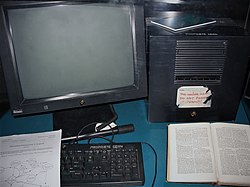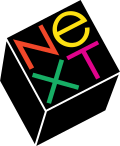Reception
| | This section needs expansion. You can help by adding to it. (July 2025) |
In 1989, BYTE magazine listed the NeXT Computer among the "Excellence" winners of the BYTE Awards, stating that it showed "what can be done when a personal computer is designed as a system, and not a collection of hardware elements". Citing as "truly innovative" the optical drive, DSP and object-oriented programming environment, it concluded that "the NeXT Computer is worth every penny of its $6,500 market price". [2] The workstation was not a significant commercial success, failing to reach the high-volume sales of the Apple II, Commodore 64, Mac, or IBM PC compatibles. This was mainly blamed on the computer's substantial price, and the fact that there was not a great demand for the system outside of the higher-education market. Next Computers were mainly sold to universities, financial institutions, and government agencies. [1]

